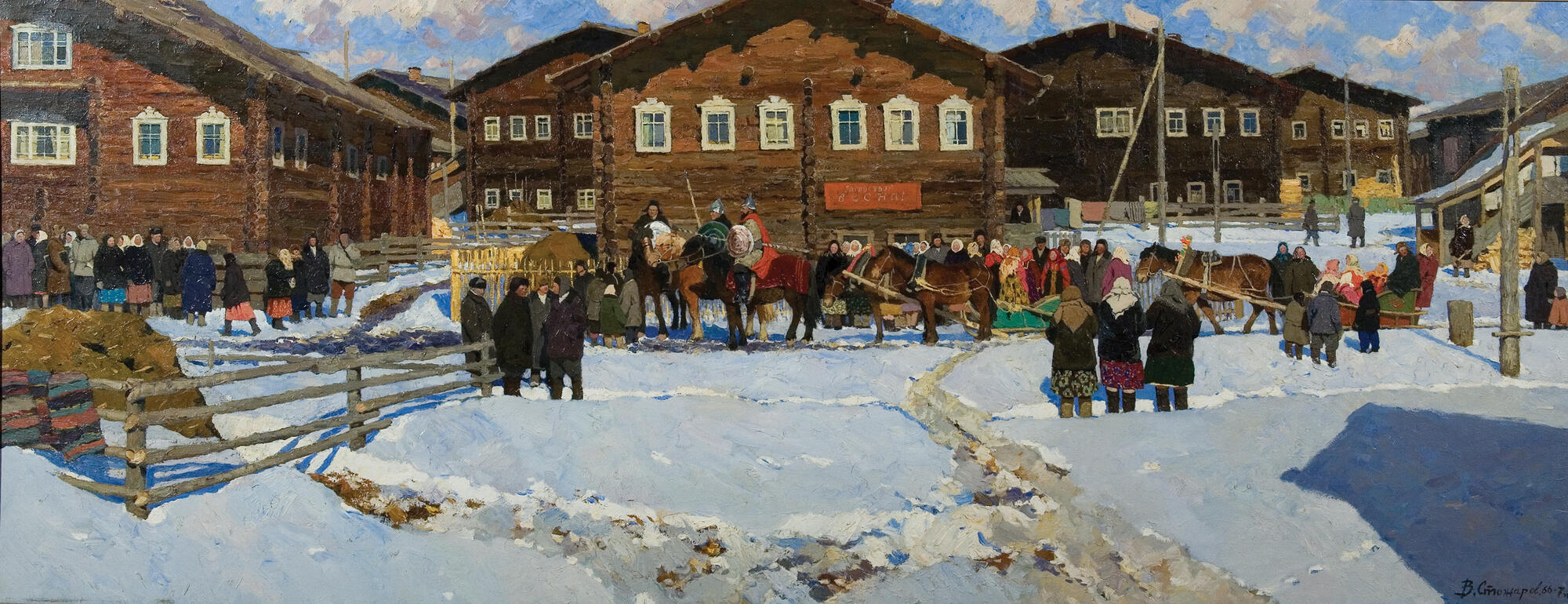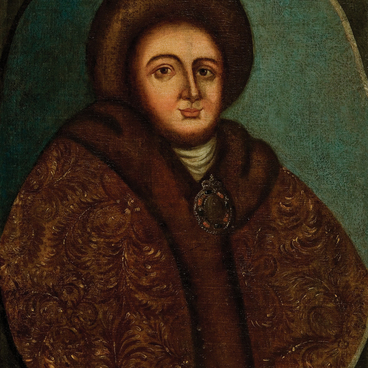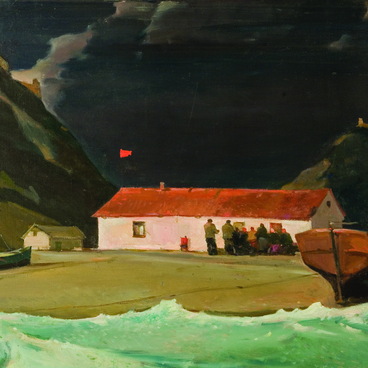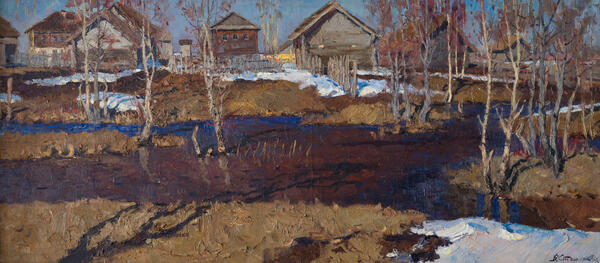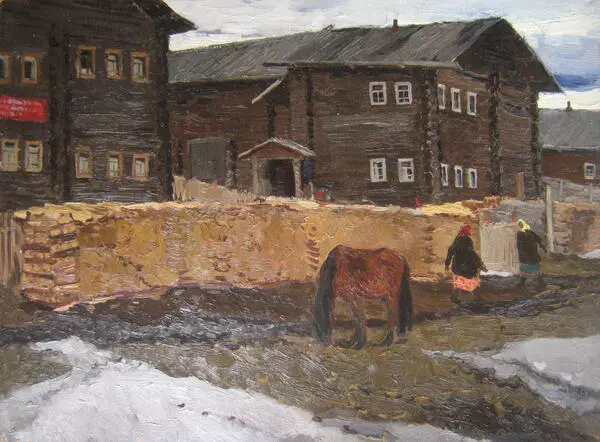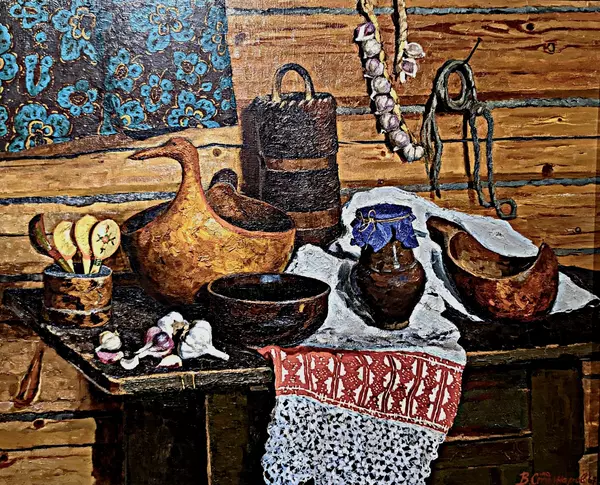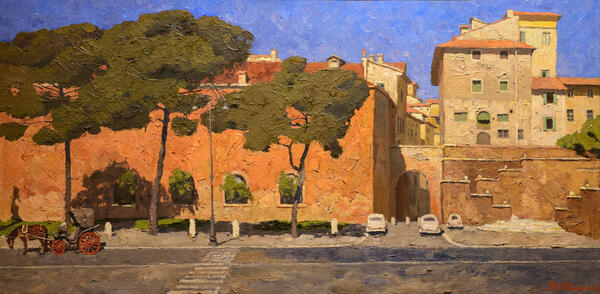The artist Vladimir Fyodorovich Stozharov was born in 1926 in Moscow. From 1939 to 1945, he studied at the Moscow Secondary Art School at the Vasily Surikov Institute of Art (MGAHI) and then at the institute itself at the Faculty of Painting. Vladimir Fyodorovich traveled a lot, making annual creative trips to the Kostroma and Yaroslavl regions, to Lake Baikal, Irkutsk, and Omsk. He visited the Yenisei and Angara. Stozharov often visited the Russian North, Arkhangelsk and Komi.
The result of one of these trips was the painting now featured in the main collection of the Voronezh Art Museum. According to researchers, the artist’s works are distinguished by a variety of plein-air subjects, a special rhythm of the compositional structure, the ability to think in spatial plans, and an acute interest in the plasticity of the brushstroke. The painting “Vazhgort Farewell to Winter” depicts a street in the northern city with two-story high wooden gable roofed houses. Carts with mummers are moving along the street, from right to left of the viewer, with three bogatyrs riding in front of them. On both sides of the street, passers-by are depicted looking at mummers. In the left part of the picture there is a large group of people facing the approaching carts. The slogan “Hello, Spring” is visible on the central house. The ground is covered with a thick layer of snow. Ragged loose clouds float across the blue sky.
Vazhgort differs from neighboring villages in its
peculiar culture. There were many large two-storey houses built in the late
19th — early 20th century. Famous Epiphany fairs were held in Vazhgort,
gathering merchants from Arkhangelsk, Kazan, St. Petersburg and Moscow.
